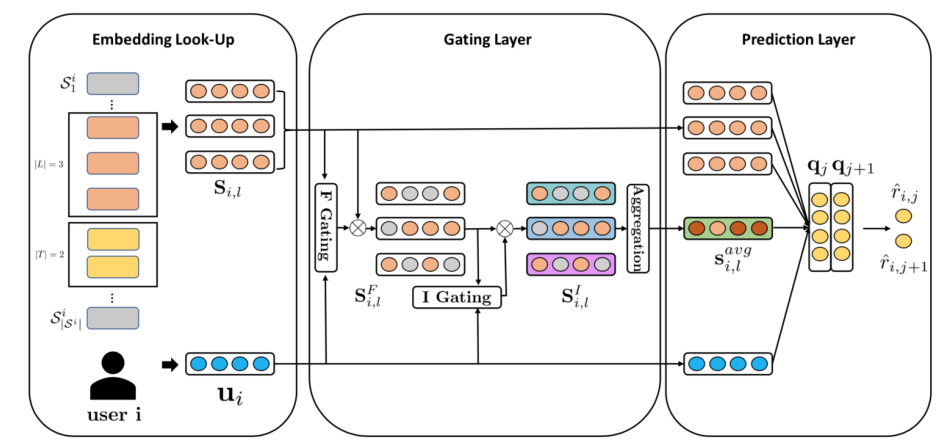HGN¶
Introduction¶
Title: HGN: Hierarchical Gating Networks for Sequential Recommendation.
Authors: Chen Ma
Abstract: The chronological order of user-item interactions is a key feature in many recommender systems, where the items that users will interact may largely depend on those items that users just accessed recently. However, with the tremendous increase of users and items, sequential recommender systems still face several challenging problems: (1) the hardness of modeling the long-term user interests from sparse implicit feedback; (2) the difficulty of capturing the short-term user interests given several items the user just accessed. To cope with these challenges, we propose a hierarchical gating network (HGN), integrated with the Bayesian Personalized Ranking (BPR) to capture both the long-term and short-term user interests. Our HGN consists of a feature gating module, an instance gating module, and an item-item product module. In particular, our feature gating and instance gating modules select what item features can be passed to the downstream layers from the feature and instance levels, respectively. Our item-item product module explicitly captures the item relations between the items that users accessed in the past and those items users will access in the future. We extensively evaluate our model with several state-of-the-art methods and different validation metrics on five real-world datasets. The experimental results demonstrate the effectiveness of our model on Top-N sequential recommendation.

Running with RecBole¶
Model Hyper-Parameters:
embedding_size (int): The embedding size of users and items. Defaults to64.pooling_type (str): The type of pooling include average pooling and max pooling . Defaults toaverage.reg_weight (float): The L2 regularization weight. Defaults to[0.00,0.00].loss_type (str): The type of loss function. If it set to'CE', the training task is regarded as a multi-classification task and the target item is the ground truth. In this way, negative sampling is not needed. If it set to'BPR', the training task will be optimized in the pair-wise way, which maximize the difference between positive item and negative item. In this way, negative sampling is necessary, such as setting--neg_sampling="{'uniform': 1}". Defaults to'CE'. Range in['BPR', 'CE'].
A Running Example:
Write the following code to a python file, such as run.py
from recbole.quick_start import run_recbole
run_recbole(model='HGN', dataset='ml-100k')
And then:
python run.py
Notes:
By setting
reproducibility=False, the training speed of HGN can be greatly accelerated.
Tuning Hyper Parameters¶
If you want to use HyperTuning to tune hyper parameters of this model, you can copy the following settings and name it as hyper.test.
learning_rate choice [0.01,0.001]
embedding_size choice [64]
pooling_type choice ["average","max"]
reg_weight choice ['[0.00,0.00]','[0.001,0.00001]']
Note that we just provide these hyper parameter ranges for reference only, and we can not guarantee that they are the optimal range of this model.
Then, with the source code of RecBole (you can download it from GitHub), you can run the run_hyper.py to tuning:
python run_hyper.py --model=[model_name] --dataset=[dataset_name] --config_files=[config_files_path] --params_file=hyper.test
For more details about Parameter Tuning, refer to Parameter Tuning.
If you want to change parameters, dataset or evaluation settings, take a look at